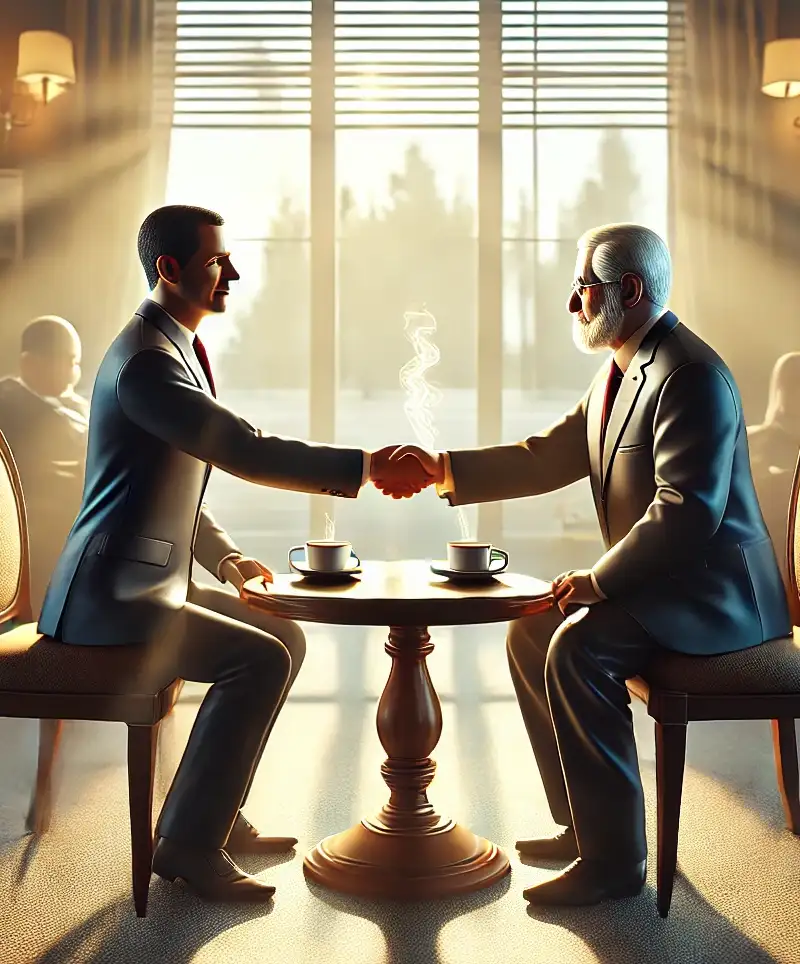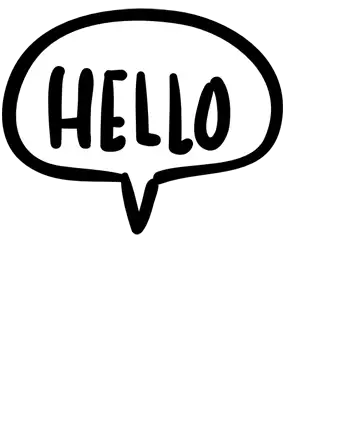The Art of Greeting, Not Grumbling
World Hello Day, celebrated annually on November 21, is a simple yet profound reminder of the power of a friendly "hello" to diffuse tension, bridge divides, and set a tone of civility in an often fractious world. It’s a day born out of conflict—a reaction to the 1973 Yom Kippur War—but its ethos is timeless: dialogue beats discord, and words carry more power than weapons. Imagine what could happen if world leaders exchanged pleasantries instead of ultimatums. Could a heartfelt "hello" save us all from doom? History might say yes—or at least it’s worth a try.
World Hello Day was the brainchild of brothers Brian and Michael McCormack, who in 1973 launched the initiative to encourage peaceful communication in response to escalating global tensions. Their idea was simple: promote peace by greeting at least ten people during the day. The premise? If you say hello to someone, you’re much less likely to want to punch them later. Over 180 countries have since embraced the day, making it a global phenomenon in grassroots diplomacy.
The Original Icebreaker
The word "hello" seems so commonplace now that it’s hard to imagine a world without it. Yet, its rise to linguistic stardom is a relatively recent phenomenon. Before the mid-19th century, greetings were a patchwork of regionally preferred salutations like "good day," "hail," or the somewhat archaic "what cheer?" These greetings worked fine, but they lacked the universal appeal of the succinct, versatile "hello."
The invention of the telephone played a pivotal role in "hello" becoming the default greeting we know today. When Alexander Graham Bell introduced his revolutionary communication device, he initially suggested people answer with a hearty "ahoy!" (Yes, the same "ahoy" favored by pirates and overly enthusiastic sailors.) Meanwhile, Thomas Edison championed "hello," arguing it was simple, clear, and easily understood. Luckily for us—and for anyone who prefers not to feel like they’re captaining a ship every time they answer the phone—Edison’s suggestion won out.
 The word "hello" quickly expanded its utility beyond telephonic interactions. It became the go-to icebreaker for almost any social situation. Meeting someone new? Hello. Reconnecting with an old friend? Hello. Accidentally locking eyes with a stranger across a crowded room? A sheepish hello could save you from awkward silence—or at least make the encounter memorable.
The word "hello" quickly expanded its utility beyond telephonic interactions. It became the go-to icebreaker for almost any social situation. Meeting someone new? Hello. Reconnecting with an old friend? Hello. Accidentally locking eyes with a stranger across a crowded room? A sheepish hello could save you from awkward silence—or at least make the encounter memorable.
But "hello" isn’t just a functional greeting; it’s a cultural bridge. Different languages and regions have their own variations, from the warm "hola" in Spanish to the elegant "bonjour" in French, the cheery "konnichiwa" in Japanese, and the versatile "namaste" in Hindi. Each carries a nuance that reflects its culture’s unique approach to connection and respect. Yet, in essence, they all serve the same purpose: to open the door to communication and set the tone for what comes next.
In today’s hyper-connected world, the power of a well-timed "hello" should not be underestimated. It can be formal, casual, warm, or even teasing, depending on the tone and context. Politicians use it to launch campaigns (think of Ronald Reagan’s famous "Hello, America!") or disarm opponents. Celebrities use it to charm audiences—Adele’s haunting “Hello” practically became an anthem for missed connections. Even artificial intelligence uses it to initiate interaction (yes, that includes me!).
So, while "hello" might seem small, its impact is anything but. It’s the Swiss Army knife of greetings—versatile, friendly, and universally understood. As the opening act for dialogue, "hello" sets the stage for all kinds of possibilities, from casual chit-chat to groundbreaking diplomacy. Whether you’re picking up a phone, bumping into someone, or extending an olive branch, there’s no better way to start than with a simple "hello."
The Political Humor of Hello
If politics teaches us anything, it’s that a well-timed greeting can be a weapon of charm or passive aggression. Imagine these scenarios:
-
At the next United Nations assembly, representatives ditch lengthy speeches in favor of a synchronized global "hello," followed by an awkward but endearing group hug.
-
The U.S. and China resolve trade disputes by texting each other emojis of waving hands. Who needs sanctions when you have stickers?
-
British Parliament reinstates the age-old tradition of polite greetings before debates. Imagine the Speaker announcing, “The Right Honorable Gentleman will say hello before accusing anyone of being unfit for office.”
How to Celebrate World Hello Day
Here are a few ways you can spread peace, one greeting at a time:
- Greet Ten People: Stick with tradition and say hello to ten people. Bonus points if you pick strangers or that coworker you’ve been avoiding since the Great Coffee Mug Incident of 2021.
- Write a Letter: Go old-school and write a friendly note to someone. Yes, email counts, but a handwritten hello might just win you the Nobel Prize for Niceness.
- Challenge a World Leader: Use social media to tag your favorite (or least favorite) leader and encourage them to join the Hello Challenge. Hashtag diplomacy could work—stranger things have happened.
Humor Meets Hope
While the day’s message is clear—encourage peaceful communication—the political undertones of World Hello Day cannot be ignored. In a world where “talks” often feel like thinly veiled shouting matches, the idea of starting conversations with an honest "hello" seems radical. Think about it: when was the last time you heard a politician sincerely greet an opponent without it sounding like a rehearsed platitude? A genuine “hello” might just be the most revolutionary weapon we’ve got—and it doesn’t cost a dime.
Imagine the headlines:
- “Middle East Peace Achieved After Leaders Exchange Warm Greetings Over Coffee”
- “Congress Passes Comprehensive Legislation After Sharing Hello-Themed Cupcakes”
- “Climate Summit Breakthrough: Leaders Start with Global Wave, End with Hug Chain”
The humor in the idea lies in its sheer simplicity. No bureaucracy, no committee meetings, no 600-page reports—just one small word that can soften hearts and open doors. Picture world leaders at a tense summit, trying to stare each other down, when someone bursts out with a cheerful "hello!" Suddenly, the ice breaks, the tension eases, and the summit devolves into a discussion of whose country makes the best pastries.
It’s also worth imagining the humorous scenarios in our daily lives if we took World Hello Day seriously. That grumpy neighbor who never waves back? Hit them with a double “hello” and a smile that says, “I’m determined to out-friendly you!” Or the coworker who always steals the last donut? Greet them with such warmth they’ll feel obligated to share next time.
The day may sound quaint, but it holds a profound lesson: humor and hope are not just compatible; they are necessary companions. A simple “hello” might not solve every problem, but it’s a start. After all, every great peace agreement begins with a conversation, and every conversation starts with some form of greeting. If we can laugh while we’re at it, even better.
So this World Hello Day, let’s embrace the humor, the hope, and the possibility that something as small as “hello” might just be the first step toward something big.
World Hello Day reminds us that, no matter how polarized the world may seem, the simple act of greeting one another with respect can be a bridge to understanding. So this November 21, ditch the bickering, skip the passive-aggressive emails, and lead with a smile and a hello. Who knows? You might just start a revolution—or at least avoid one.
Hello, peace. Goodbye, strife. Let’s make it happen.
Please Share our Content






 The word "hello" quickly expanded its utility beyond telephonic interactions. It became the go-to icebreaker for almost any social situation. Meeting someone new? Hello. Reconnecting with an old friend? Hello. Accidentally locking eyes with a stranger across a crowded room? A sheepish hello could save you from awkward silence—or at least make the encounter memorable.
The word "hello" quickly expanded its utility beyond telephonic interactions. It became the go-to icebreaker for almost any social situation. Meeting someone new? Hello. Reconnecting with an old friend? Hello. Accidentally locking eyes with a stranger across a crowded room? A sheepish hello could save you from awkward silence—or at least make the encounter memorable.








 "Sláinte!" is a traditional Irish expression used as a toast, equivalent to "Cheers!" in English.
"Sláinte!" is a traditional Irish expression used as a toast, equivalent to "Cheers!" in English.